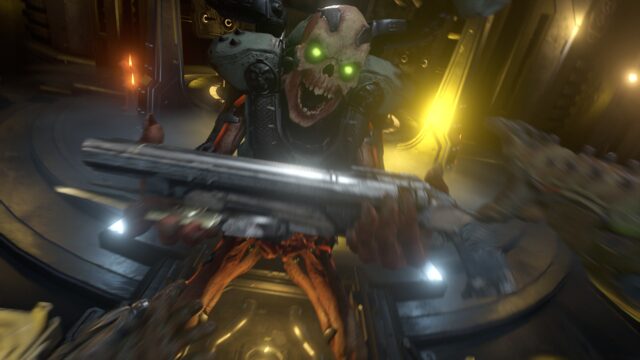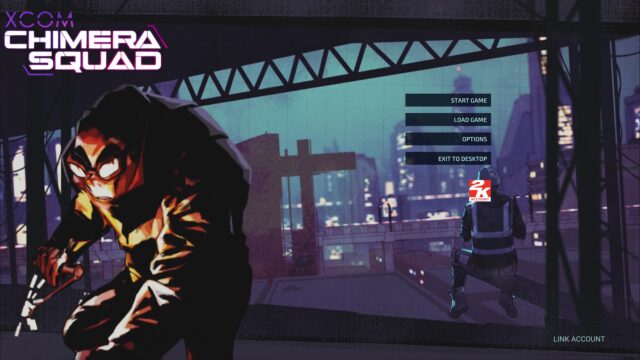Rage Review

Whatever you name the boat, it will be launched on your computers.
The first mission
At first, Rage would just crash right after starting. It wasn’t very fun, considering I had what seemed to be the ready code for the latest shooter from the great and terrible id Software on my hard drive. The post-apocalyptic FPS, which we had been waiting for for at least five years, promising an amazing gameplay and graphics, as well as a unique atmosphere and style, was successfully activated on Steam but wouldn’t progress past the first black loading screen. It wouldn’t even show the intro videos. Damn it.
The stronghold of goodness and justice known as the AMD website (yes, I am a “lucky” owner of a Radeon) brought some joy – new Catalyst drivers were just released, time to download! And that’s when I started having some serious problems. After the update, my poor computer managed to launch Rage, but in return fell victim to an unknown bug, causing the PC to heat up to 100 degrees Celsius even during idle. I don’t think I need to explain the dangers of such tricks. Rolling back the drivers didn’t help.
The wave of panic forced me to restore the factory settings on my gradually burning laptop (just to clarify, a powerful gaming one, mind you, more than enough for Rage). It was a reckless, stupid move, but how soberly could I judge the situation at that time? Everything was lost, including my work documents, woo-hoo.
By the time I had reinstalled everything more or less, sent the game and its developers to hell, and resigned myself to my fate, another set of new drivers from AMD arrived. I still couldn’t think straight, and the temptation was too great. 100 degrees, heat everywhere, we reset everything for the second time.
And yes, soon the updated drivers came out for the third time. But I was prepared for it! There was no way I would install all the necessary software again in such a situation, men fight to the last corners of their laptops! And for my faith, I was rewarded – the drivers installed, the computer worked in a more or less standard mode, and the game launched. Like this:
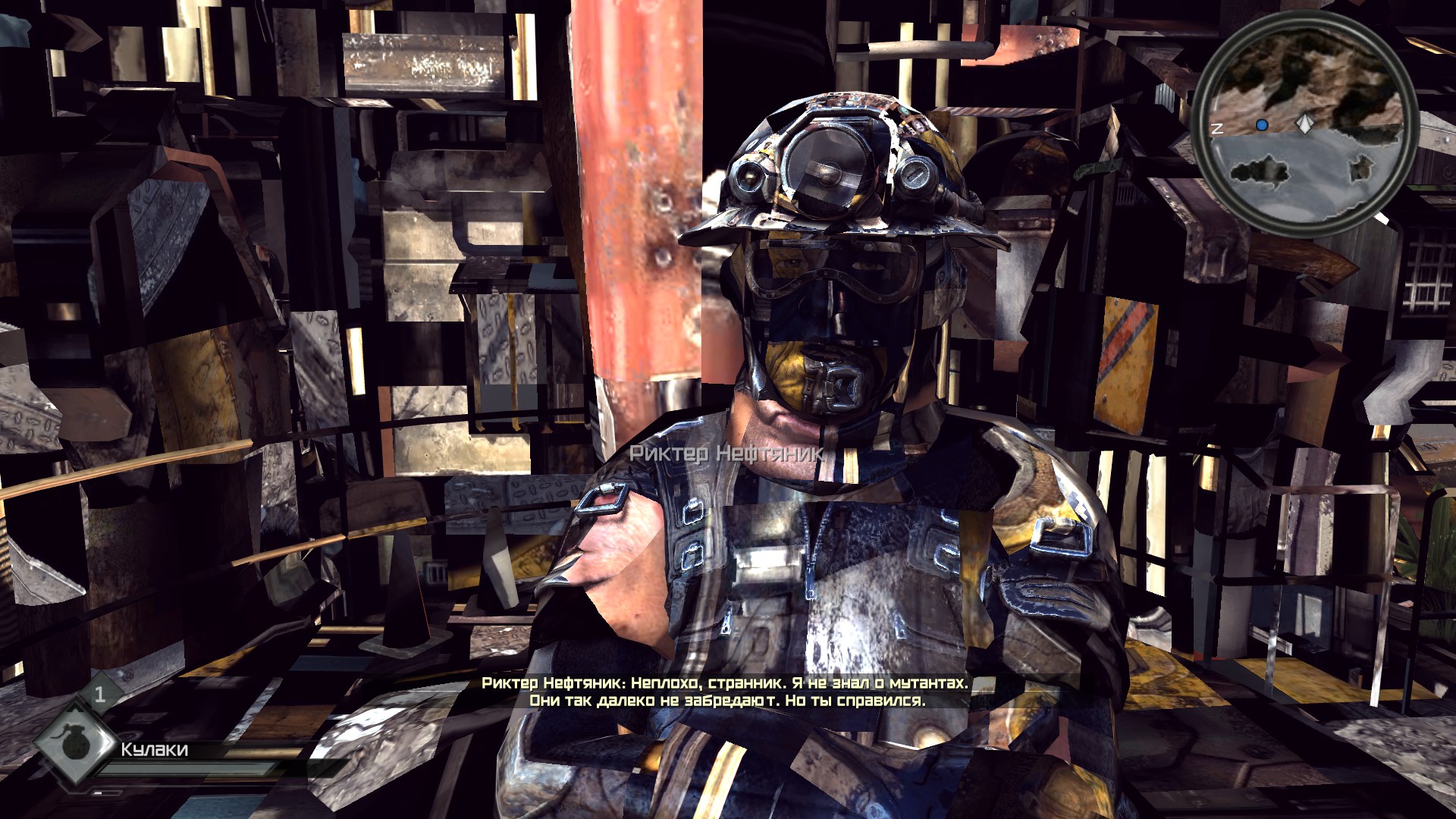
It was already obvious to me that this was the final test on the path to enlightenment, and the most important thing was to show even a drop of patience and wait for the patch. The patch was released, but the textures continued to load in the same way. I had to resort to the disgusting and malicious internet for help. I found it right next to the distributor of the infamous non-working FPS client on the Steam Community forums, a place where fellow failures like me gather to complain and seek solutions from more knowledgeable users. And, most importantly, they often find them!
Following the advice of a genius from the forums, after tinkering with the settings of the Catalyst Control Center (lucky Nvidia users don’t know this hellish program for adjusting Radeon graphics card settings, but we do), I was finally able to make the game display textures more or less properly.
So I completed the first and perhaps the most difficult mission of the Rage version for personal computers. And if you really want to play the latest project from id, be prepared to go through the same thing in case of bad luck.
Beautiful destroyed world
The first task is simply awful, but as soon as it is completed, the gamer is finally released into the most beautiful world of destroyed megacities, pulsating with life on the ruins of civilization and endless races through the deserts. The old id games hit the bullseye with their crazy technologies and revolutionary gameplay ideas; Rage, on the other hand, impresses not with muscles, but with design. The Americans have drawn and modeled the best depiction of the post-apocalyptic world to date. The later parts of Fallout lacked gloss and scale, Borderlands was not really about post-apocalypse, and in general, it also offered a more modest panorama, but our new game is simply magnificent in its grandeur. There is currently nothing more atmospheric than the landscapes here.
Unfortunately, the game’s open world is nothing more than a beautiful mirage (the polygonal wastelands are not even seamless, as one might expect). No matter how hard id tries to keep up with the times and turn their shooters into sandboxes, in the end, they still end up with either corridor shootouts or arena battles. De facto, there is nothing wrong with that, because the local level pipes are painted and furnished no worse than the rest of the world, and classic FPS games are meant to have the formula applied to them with various variations working everywhere. We just expected something different from Rage…
But what can you do, you have to get out of the Ark (such an economy-class Shelter) and pick up a gun. The locals greet the latest miraculously saved guest from the past in a rather interesting manner. The middle-aged man who runs the settlement, which has grown around a gas station, immediately sends the protagonist, who has just emerged from his cryogenic capsule, to kill people. And our hero has been preparing for this his whole time in the Ark, yeah.
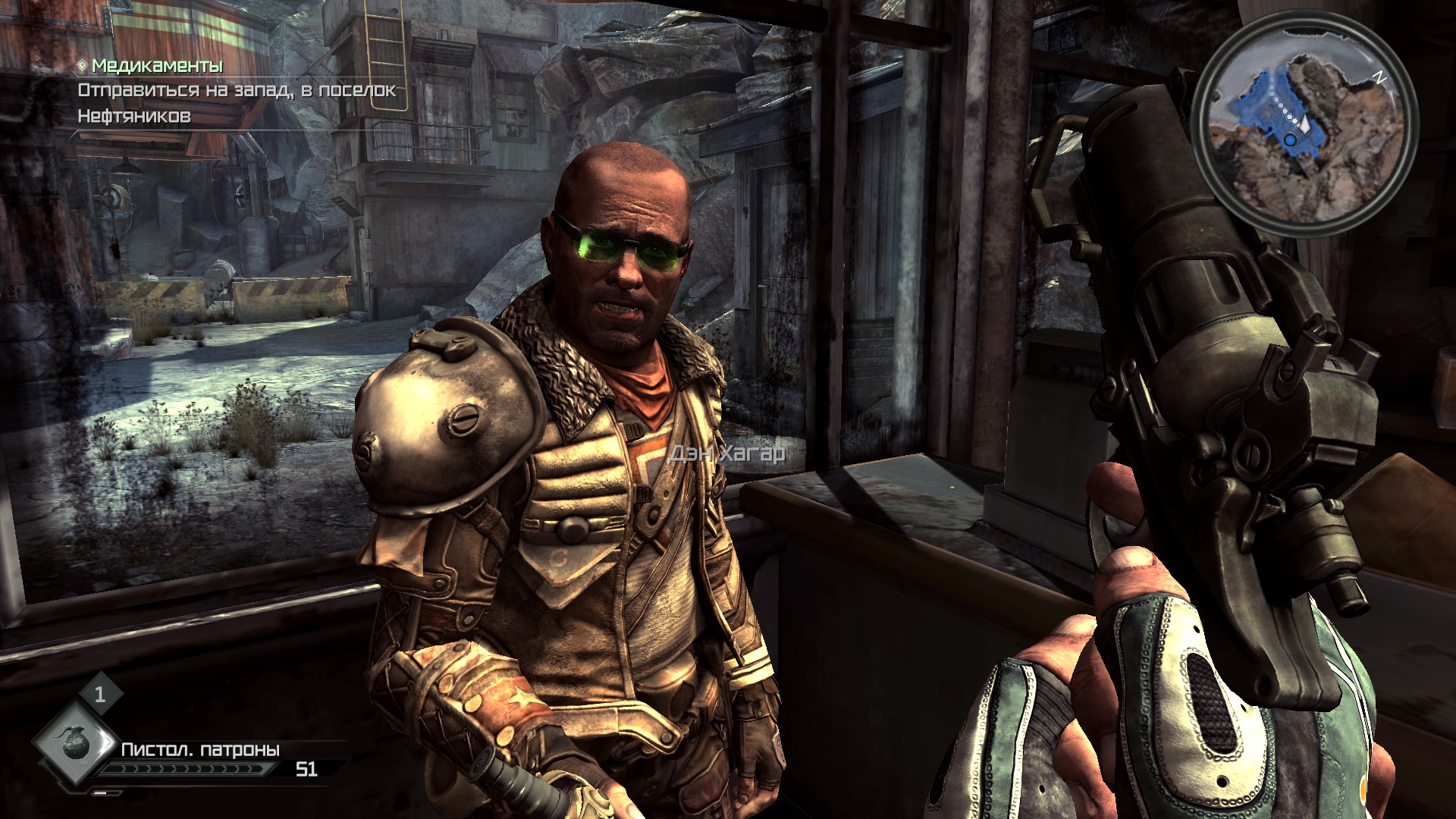
Here he is, the cunning gas station owner.
The first raid on bandit scalps finally put all the dots over the assigned letters: Rage is about graphics and atmosphere, not about intense shootouts. The cluttered corridors are just as beautiful as the open wasteland, and the animated enemies jump back and forth. The enemy models move so smoothly – the various videos and demonstrations were not lying to us. However, sometimes the 3D characters overact – have you ever seen deliberately cardboard wrestling? – and after some boring injury to the hand, they start performing a whole “Swan Lake”.
To my greatest regret, the enemies approach the battle with much less imagination and enthusiasm. Foot soldiers can roughly be divided into two categories – those who try to turn the hero’s head in close combat and those who don’t rush anywhere. Only a couple of particularly vicious mutants, unique to the wastelands of Rage, do not fit into this classification, combining hand-to-hand and long-range combat skills. For the other 99% of enemies, the recipe is always the same: prepare shotguns for berserkers, and deal with the rest as you please.
While you will inevitably have to dodge and dance around the wild horses and especially thick mutants, the guys who have acquired guns are boring regardless of the difficulty level. But at least you can annihilate enemies however you like. Rage is a glimmer of light in the dark realm of “We don’t give you more than two guns in your hands”: not only can you carry all the guns, grenades, and other winged things you find/buy, but you can also play with each gun in a special way. Most of the available guns can use at least two different types of ammunition, some of which have interesting properties. I think you’ve already seen the crossbow that shoots electric bolts (electric bolts are not mine) and the very fun poisonous hypno-bolts. I hasten to report: everything works as it should, shoots and looks exactly as shown, and that is undoubtedly great.
Take away the bots’ automatic weapons! Computer dummy bots with auto-aim and automatic weapons are an inevitable evil in realistic settings, but not necessary in fantasy games. The combination of bots with automatic weapons and health regeneration turns any single-player shooter into a monotonous boring shooting gallery, where the only serious opponent is not the soldiers/monsters/robots that stand in your way, but the “popped out-hidden” timer. This is not multiplayer, where anything can happen – silly misses, crazy hits, unexpected maneuvers, and head-on attacks from desperate network berserkers. Here, we know all the possible moves in advance, and the nature of computer opponents with automatic weapons leaves the gamer no choice in approaching the annihilation of enemies. No, stealth doesn’t solve the problem at all, unless we’re talking about Deus Ex To hit a headshot without a timer or to hit a headshot with a timer – the variety is small.
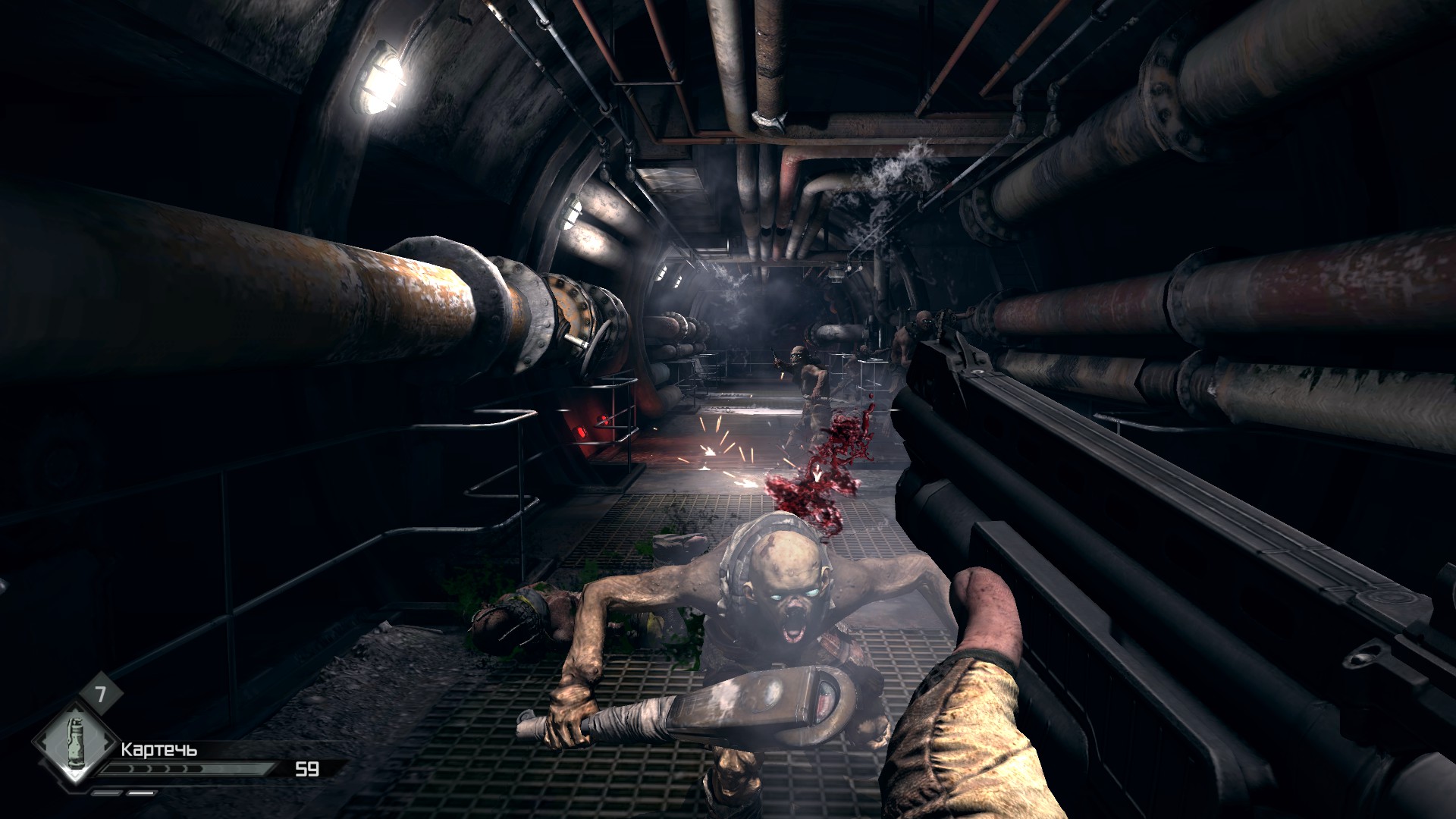
Queue!
We resist resistance
Comrade owner of the gas station is a practical guy, and as soon as the player completes all his tasks, he sends the miracle from the Ark as far away as possible, just so that the Government does not get hold of it. As you can easily guess, the local government is bad, cruel, evil, and so on. The evil essence of the government is manifested in such facts as: the presence of the Government in the government, strict and cruel control over whatever threatens the Government and all other Ark survivors, and the state military program to turn mutants into controlled weapons. Bad, bad Government. How can the Government be good when it strictly adheres to the concept of “government”? And don’t look at the fact that only the main rebel (who is heavily dependent on government aid for very understandable reasons) and five mutants are in the local prison.
It is absolutely obvious that the government’s lackeys will eventually have to be shot simply because they are hunting the main hero, but why does no one like the authority in Rage at all, I still don’t understand. Okay, they closed a casino in one city, someone might not have liked that, fine, they conduct experiments on mutants instead of doing what every (dis)honest wasteland resident does, shooting them in the head, plus no one has such cool armor as the soldiers do (and all because in the game world almost all the belongings of the deceased, such as personal weapons or armor, evaporate and fly away somewhere far away with the souls of the owners), and the Ark dwellers have a lot of problems, but why get so worked up about it?
Well, they sent them away, they sent them away. Until the happy end comes, the player will be moving between various support points and cities that parasitize on the dead concrete jungles of the past. In the cities, it’s good – you can stock up on supplies and upgrades, make money on gambling (make sure not to miss the maps for the local simple analogue of Magic: the Gathering scattered around the locations – firstly, it’s very interesting to play, it makes sense to think through some tactics and carefully choose decks, and secondly, victories at the gaming table are an endless source of money for ammo, rockets, weapon upgrades, and much more), take and complete quests, and participate in races.
And there will be a lot of races, because shootouts are only half of the game. For not very obvious reasons, id Software made a big bet on various desert races. Almost immediately after leaving the Ark, our protagonist is presented with a quad bike so that he can reach the bandits waiting for their fate, then with intervals of a few hours, the game will give you a buggy, and then a car called “Kuprino”. On the second and third ones, you can already have skirmishes on the roads.
In addition to the car battles on someone else’s territory, with the help of vehicles, you can earn money by express delivery of mail to different parts of the desert world, and also gain fame (but not wealth) in various city competitions. In spirit, these rides are close, strangely enough, to the classic Rock’n’Roll Racing, with a couple of exceptions. Well, and taking into account the fact that RnRR is a 16-bit game, and Rage will be slightly more modern. But the essence of these two arcade racing games with rockets is the same – in one way or another, break through to the first place on the track, then do everything possible to hold it, earn rating points, and advance your career.
It’s good that the racing story in Rage is self-contained. The reward in city competitions is non-convertible points that cannot be used to buy anything except car parts, which are needed to make driving easier, to make it easier to complete road tasks, to make driving easier. In other words, if car competitions in an FPS are not for you, you can easily skip them without any problems and spice up the monotonous shooting with a game like Heroes of Might and Magic 6 or anything else.
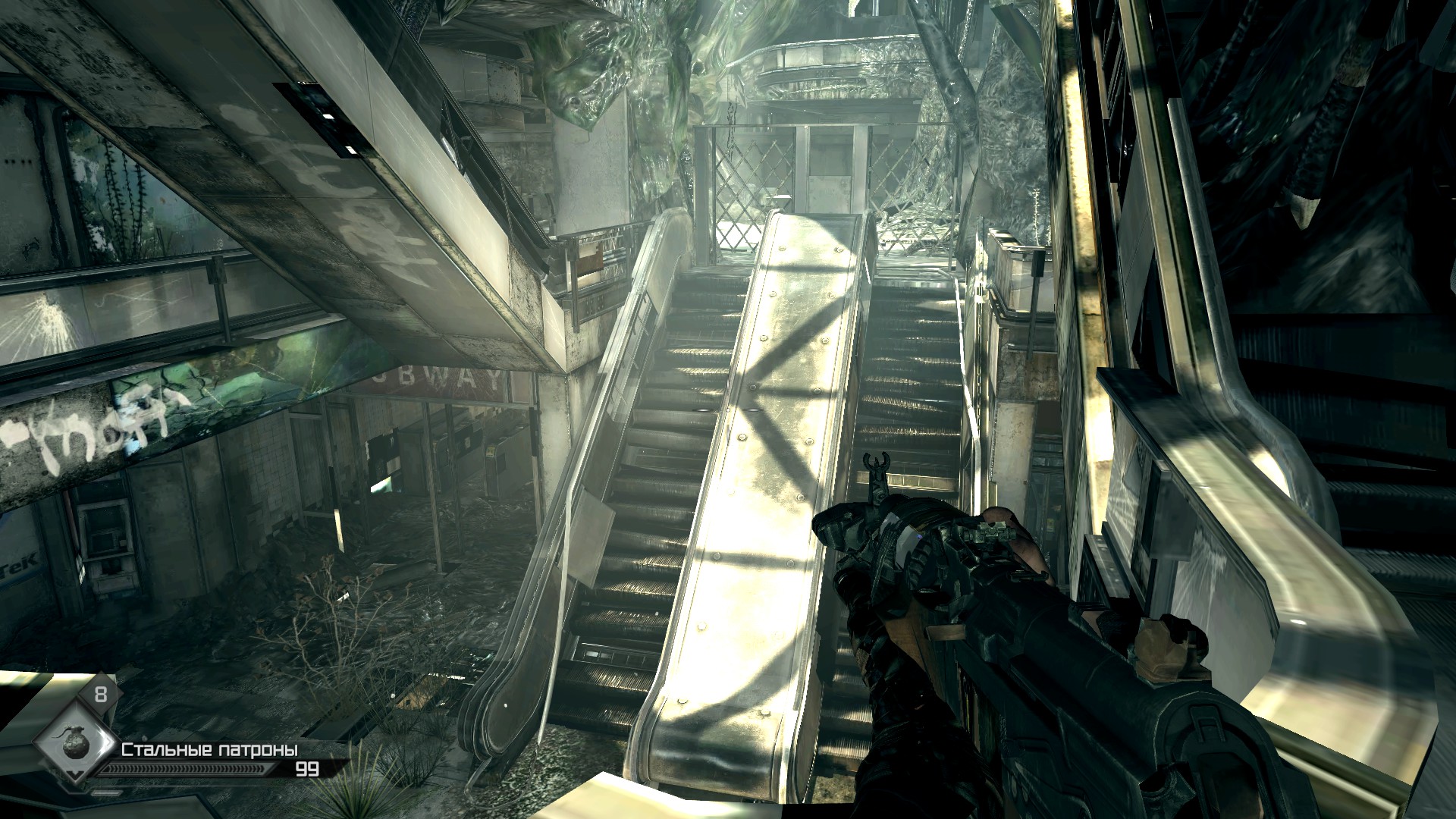
If we talk about some pure gameplay, then Rage is far from being a revelation, but simply a decent passable shooter. What makes it a true hit is its impeccable visual design. The beauty, scale, and (not realism, but) truthfulness of the game world bind and firmly hold together the not-so-dynamic shootouts, not the most exciting races, not the most interesting storyline, and a thousand insignificant details themselves, making the whole product bigger than just the sum of its parts. This beauty and harmony can easily captivate a gamer for long hours.
If only to complete the first mission.
Share
Discuss
More Reviews



